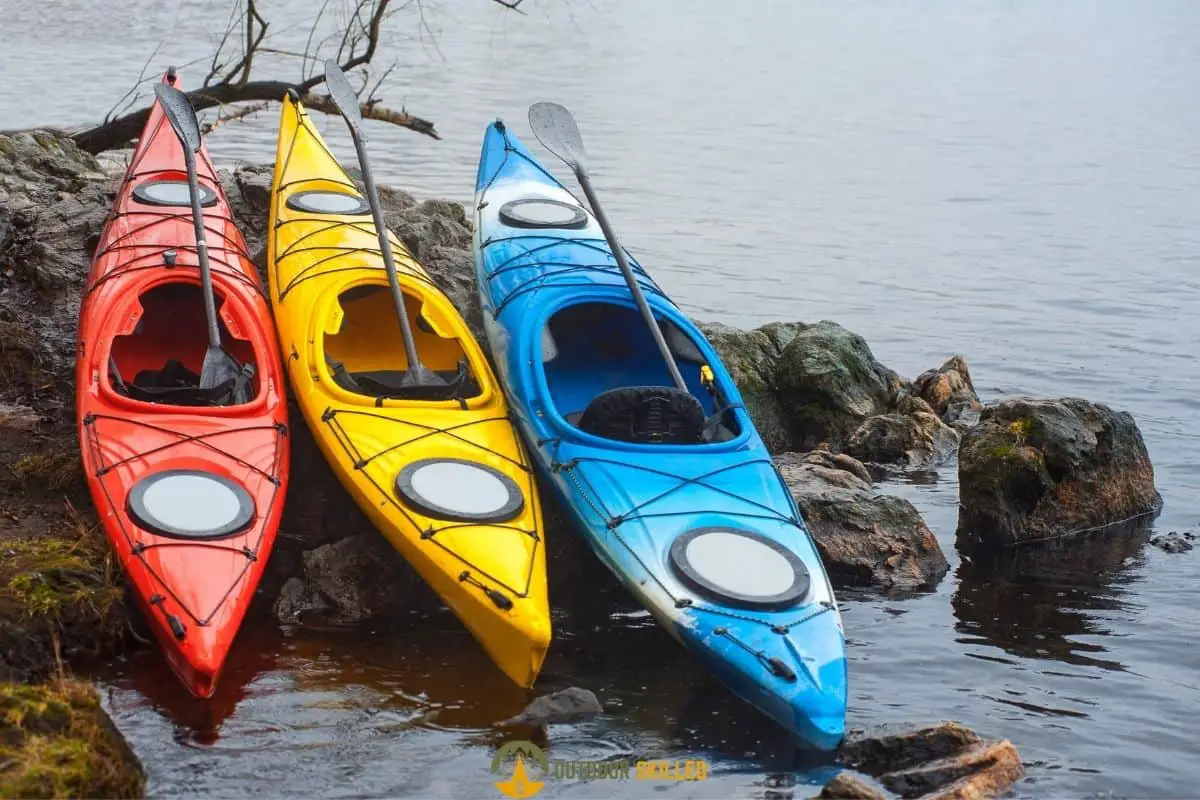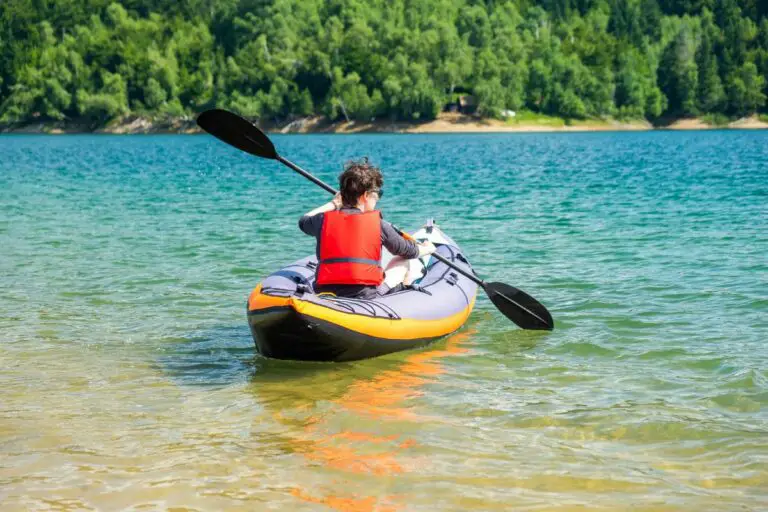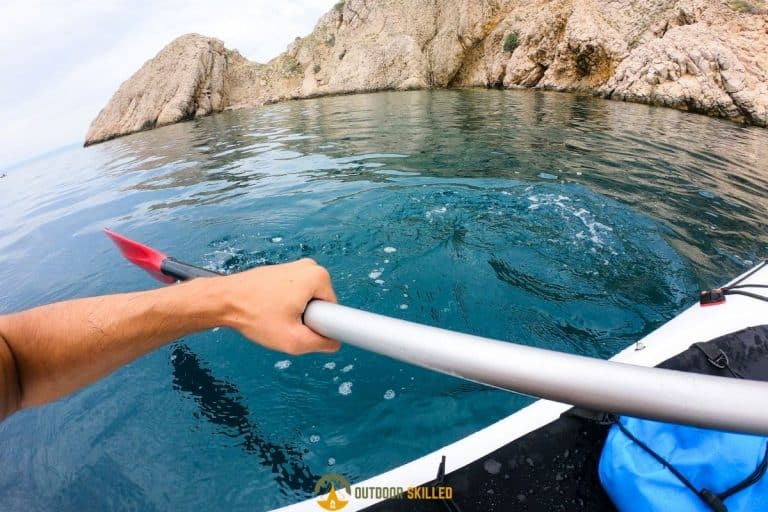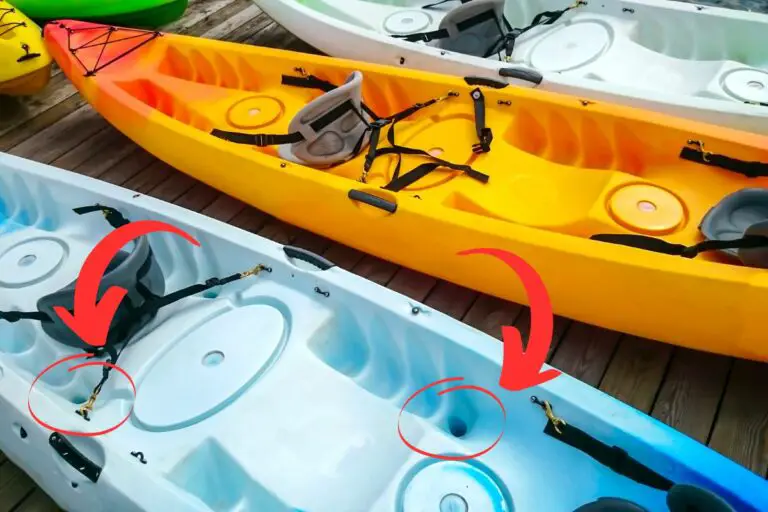How Durable Are Fiberglass Kayaks? Fiberglass Kayaks Durability Tested
Fiberglass kayaks are famously known for being light in weight and high in cost. However, there’s some doubt when it comes to their durability as many regard them as fragile when compared to other kayaks made from heavier material like plastic.
So, how durable are fiberglass kayaks? Fiberglass kayaks can be highly durable if they are properly maintained. They are unlikely to get damaged without interference from factors such as UV rays damage, water damage and fatigue. That’s because fiberglass kayaks are made from woven fibers and treated with a strong resin material.
Keep reading to learn more about fiberglass kayaks and the difference between them and other kayak materials. If you are looking for good fiberglass kayaks that won’t break your wallet, make sure to check out my guide to the best budget kayaks here or check out the recommendations section at the end of the article.
Table of Contents
What Makes Fiberglass Kayaks Durable?

Fiberglass kayaks are manufactured by drawing out the glass into fibers then weaving the fibers together and layering them in an open mold.
This surface layer of the kayak is coated with a type of resin called gel-coat. This type of resin contains silica powder combined with polyester which makes the hull of the kaya stiffer and more resistant to damage.
What Are the Factors That Affect Fiberglass Durability?
Fiberglass kayaks can still be brittle and prone to scratches or cracking if they’re subjected to very heavy impact.
However, fiberglass will never break down on its own. Instead it is more likely to break down due to outside factors or lack of maintenance.
Let’s look at factors that can reduce the durability of fiberglass kayaks and how you can prevent that from happening.
UV rays damage
Long exposure to UV rays can result in weakening the kayak’s material making it more brittle and more prone to warping. It can also affect the color of the kayak.
So, it is important to keep your kayak shielded from the sun and heat by storing the kayak inside or keeping it undercover.
Fatigue
Fiberglass kayaks can be worn down over time from constant use, heavy impact from waves, engine vibrations, and other activities can cause a significant amount of strain on the kayak’s surface.
It’s important to regularly check the kayak for signs of fatigue such as cracks. If any cracks are found, even if they’re small, they should not be ignored as they can get bigger with time and cause permanent damage.
Water damage
Although the resin layer itself is waterproof, if enough water gets absorbed, it can cause a breakdown between the fiberglass surface and the resin layer which can cause damage to the kayak.
Make sure to protect the bottom of the kayak because that’s the part that is constantly exposed to water and the most susceptible to this damage
Salt Damage
Salt can get deposited in the fiberglass’s larger porous areas which leads to adding more pressure on the fiberglass resulting in cracking or corrosion.
To prevent that from happening, it’s important to keep the kayak clean and dry.
What Are the Other Advantages of Fiberglass Kayaks?
Fiberglass kayaks have some other advantages other than being highly durable. They’re very light in weight which makes them easy to transport. They’re very fast and responsive because of the gel-coating that makes their hulls stiffer.
What Is the Difference Between Fiberglass and Other Kayak Material?
The most common materials used in manufacturing kayaks include plastic, fiberglass, Kevlar
Most whitewater kayaks, recreational kayaks, and sit-on-top kayaks are made of a plastic material. Touring kayaks and sea kayaks, on the other hand, are mainly made out of composite materials such as fiberglass or Kevlar. You can learn more about Fiberglass kayaks in my post on why are fiberglass really good here.
How Are Plastic Kayaks Different from Fiberglass Kayaks?
Plastic kayaks are made from polyethylene or polythene using a process called rotomolding. This makes them significantly more durable than fiberglass and can withstand all kinds of heavy impact without causing any permanent damage.
Another major difference is that they’re a lot heavier than fiberglass kayaks as well as cheaper because polyethylene is very abundant. You can learn more about Plastic kayaks and why they’re actually good here.
How Are Kevlar Kayaks Different from Fiberglass Kayaks?
The main difference is that Kevlar kayaks are made using less resin which makes them much lighter in weight than fiberglass kayaks. They’re also stiffer with higher tensile strength which makes them slightly more expensive and more difficult to repair.
Another feature they have that sets Kevlar kayaks apart from fiberglass kayaks is their distinctive gold color.
The Best Fiberglass Kayak Brands
Northwest Kayaks is a popular brand that manufactures fiberglass kayaks. One of their best seak kayak models is Cadence.
Cadence is the longest of the Northwest Kayaks single kayaks. These kayaks offer impressive performance, more speed and better tracking because of their notably high-chined sides combined with a sleek narrow profile.
They’re very light in weight and offer plenty of dry and open-air storage space as they come with watertight hatches and three deck bungees. They also come with very Comfortable and adjustable seatbacks
Another efficient kayak from Northwest kayaks is Seascape Point 5.
These double sea kayaks come with a streamlined bow that allows them to glide through the water quickly and easily. The rudder is also quick and responsive which allows for better tracking and more precise maneuvering. You can also check out my honest review of Ascend Kayaks here.
Related Questions
Why Are Fiberglass Kayaks So Expensive?
Fiberglass kayaks are more expensive than other types of kayaks because of the complexity and higher cost of its manufacturing process. They also provide more beneficial features such as more storage space and adjustable seating. Their price range starts around $1,000, and can go up to $3,000.
How to Clean a Fiberglass Kayak?
To clean your kayak, you need to thoroughly scrub the interior and exterior with mild soapy water and rinse it to remove any debris, sand or salt. You also need to make sure your kayak is completely dry before storing it to prevent corrosion and mold growth.
Can You Repair a Fiberglass kayak?
You can easily repair a fiberglass kayak if the extent of the damage is small enough and doesn’t require any professional help. You will need to drill out the damaged fiberglass. Then you need to pour a mixture of epoxy resin into the damaged area and block it off with tape until the epoxy is cured. Finally, you can smooth the surface using sandpaper.
Helpful Resources
Recreational Kayaking: The Ultimate Guide By Ken Whiting (you can also check the book on Amazon here)
Durability of Fiberglass Composite Sheet Piles in Water
Kayak your way to Freedom
- On a budget? Check out the best fishing kayaks under $500 here and the best Fishing Kayaks under $1,000 here. Or Check the best Cheap Kayaks here.
- Going fishing? Here are the best Ocean fishing kayaks, and here are the best River Fishing Kayaks.
- You can also find the best Fly Fishing Kayaks here and the best Bass Fishing Boats here.
- A bit experienced? Check out the best modular kayaks here and the best tandem fishing kayaks here.
- Looking for something special? Check out my favorite Ducky kayaks here.
- Navigate your way with these awesome and beginner-friendly Kayak compasses.
- Going Hunting? These Duck hunting kayaks will give you an unfair advantage!
- Have a need for speed? These motorized kayaks will get you moving.
- Protect yourself from the sun with these Kayak shades, and make your kayak more comfortable with these Kayak seats.
- Keep your feet dry and warm with these superb Kayaking shoes.
- Going Kayaking in cold water? Stay warm with these Kayaking gloves.
- Paddle Less, Fish More with the Best Kayak Motors
- Looking to get a trolling motor on your kayak? Check out the best kayak trolling motor mounts here.







